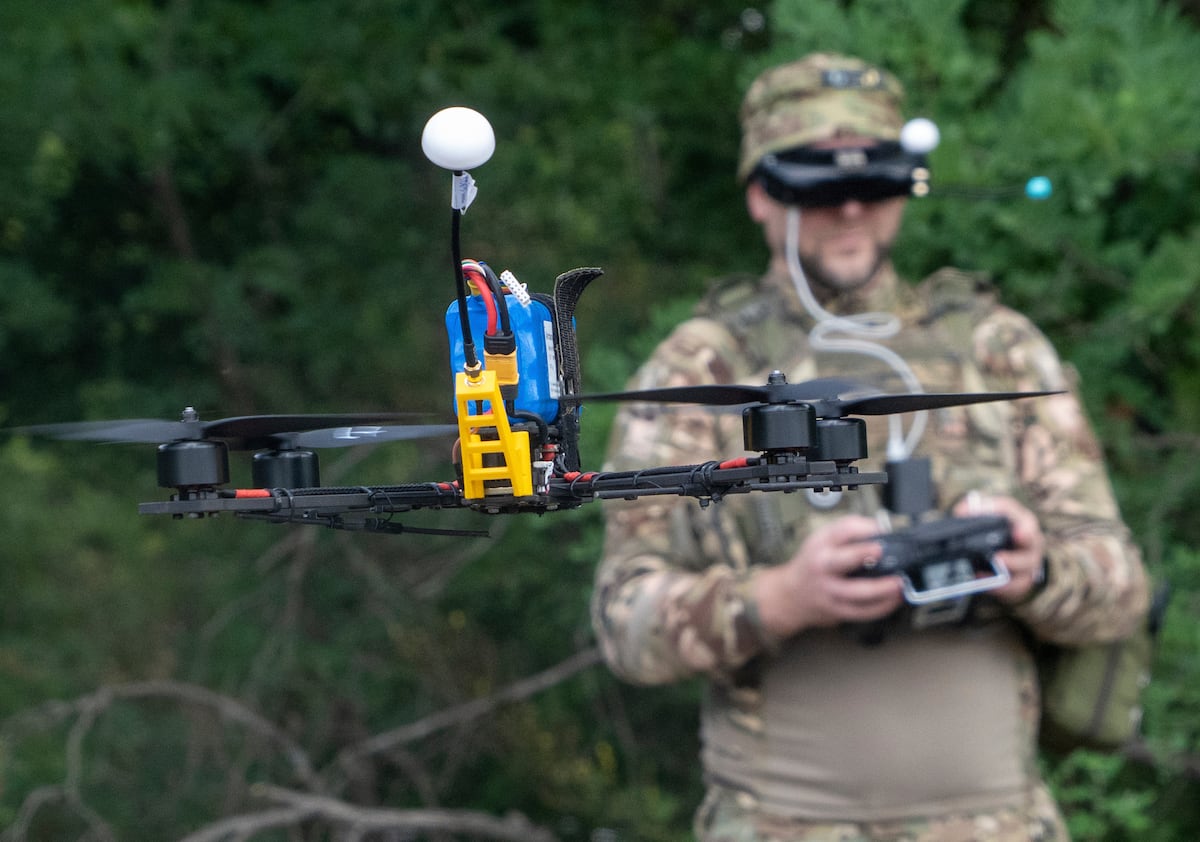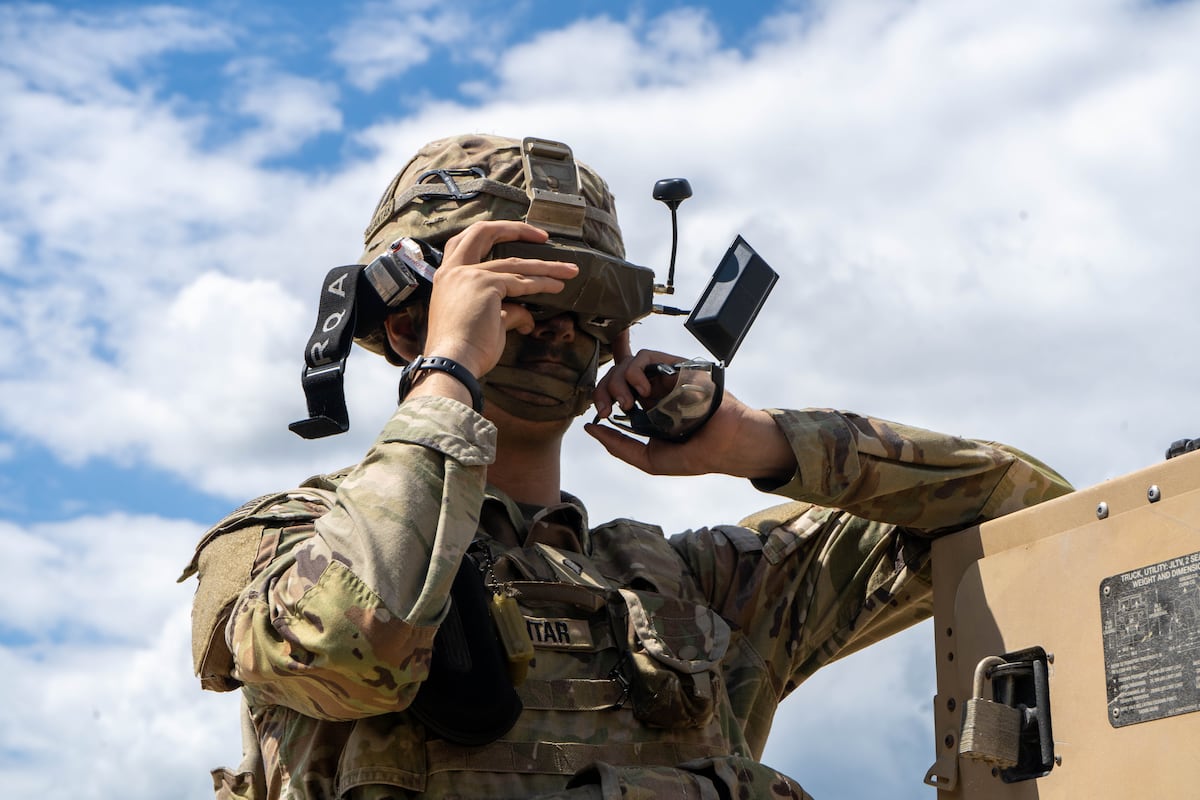- Reaction score
- 11,784
- Points
- 1,160
I am double-posting this article intentionally. It had some relevance to the training of pilots so I posted it in "Future Helicopters". However the discussion about flying drones in a contested environment is fascinating. Particularly some comments about US vehicles like Skydio.
6 Questions with an experienced Ukrainian FPV operator.
They do a lot more than just fly drones.

 www.defensenews.com
www.defensenews.com
"There are also information gaps between many European or U.S. manufacturers about what is going on the battlefield right now and when this information is made available or reaches them. This is also true for some Ukrainian producers that do not have direct contact with ground units.
"Last year, I met with a European manufacturer of a fixed-wing strike drone, and everything looked interesting and reliable until we asked whether they had tested it in similar jamming conditions as seen on the battlefield. The producer said, “No, we haven’t even once,” — then, it’s a question of not knowing how such a system will behave on the battlefield.
"Another example of a system not working very well is from the U.S. company Skydio; some of their drones have not been reliable under current jamming conditions found on the front."
.....
"These realities also apply to some Ukrainian manufacturers and domestically produced systems. During recent unmanned ground vehicle testing, several platforms encountered significant challenges under conditions designed to replicate actual battlefield scenarios.
"The testing protocols were deliberately strict: vehicles had to reach firing positions and engage targets from distances between 300 and 500 meters. Crucially, the manufacturers themselves had to operate their own robots from a dugout — without direct line of sight or stable communications — relying only on the robot’s onboard camera feed and a surveillance drone overhead.
"This approach was intentional, to put developers in the shoes of actual soldiers. It made the task considerably harder because the drones weren’t being piloted by experienced operators. If a UGV stopped, crossed boundary markers, or became stuck in the terrain, that run was terminated. Manufacturers were prohibited from recovering their stuck vehicles — these became additional obstacles for subsequent robots starting their runs.
"Before deployment, participants could only review quadcopter flyover footage, just as they would in real combat conditions. They couldn’t walk the terrain or conduct ground reconnaissance — you can only use recon drones to understand what lies ahead, and must adapt on the spot."
6 Questions with an experienced Ukrainian FPV operator.
They do a lot more than just fly drones.

Of fiber-optics and FPVs – 6 questions with a Ukrainian drone trainer
Unmanned FPV motherships are on the rise, as operators face an intense cat-and-mouse game on frequency jamming and exploiting momentary vulnerabilities.
"There are also information gaps between many European or U.S. manufacturers about what is going on the battlefield right now and when this information is made available or reaches them. This is also true for some Ukrainian producers that do not have direct contact with ground units.
"Last year, I met with a European manufacturer of a fixed-wing strike drone, and everything looked interesting and reliable until we asked whether they had tested it in similar jamming conditions as seen on the battlefield. The producer said, “No, we haven’t even once,” — then, it’s a question of not knowing how such a system will behave on the battlefield.
"Another example of a system not working very well is from the U.S. company Skydio; some of their drones have not been reliable under current jamming conditions found on the front."
.....
"These realities also apply to some Ukrainian manufacturers and domestically produced systems. During recent unmanned ground vehicle testing, several platforms encountered significant challenges under conditions designed to replicate actual battlefield scenarios.
"The testing protocols were deliberately strict: vehicles had to reach firing positions and engage targets from distances between 300 and 500 meters. Crucially, the manufacturers themselves had to operate their own robots from a dugout — without direct line of sight or stable communications — relying only on the robot’s onboard camera feed and a surveillance drone overhead.
"This approach was intentional, to put developers in the shoes of actual soldiers. It made the task considerably harder because the drones weren’t being piloted by experienced operators. If a UGV stopped, crossed boundary markers, or became stuck in the terrain, that run was terminated. Manufacturers were prohibited from recovering their stuck vehicles — these became additional obstacles for subsequent robots starting their runs.
"Before deployment, participants could only review quadcopter flyover footage, just as they would in real combat conditions. They couldn’t walk the terrain or conduct ground reconnaissance — you can only use recon drones to understand what lies ahead, and must adapt on the spot."



